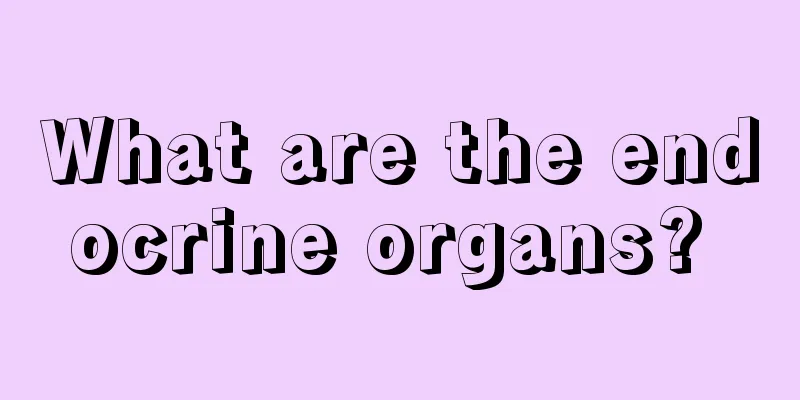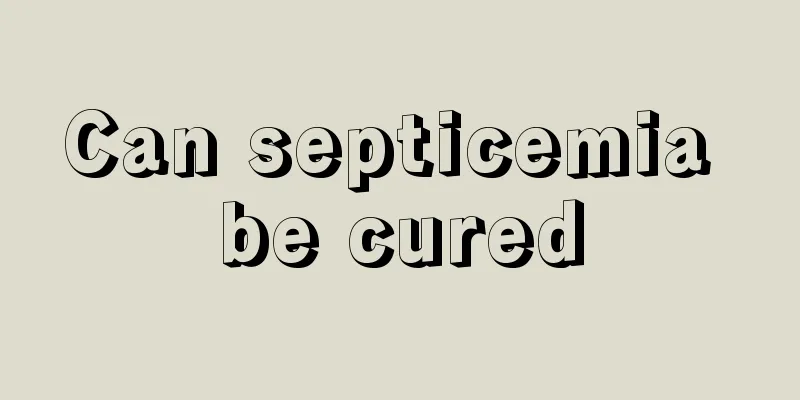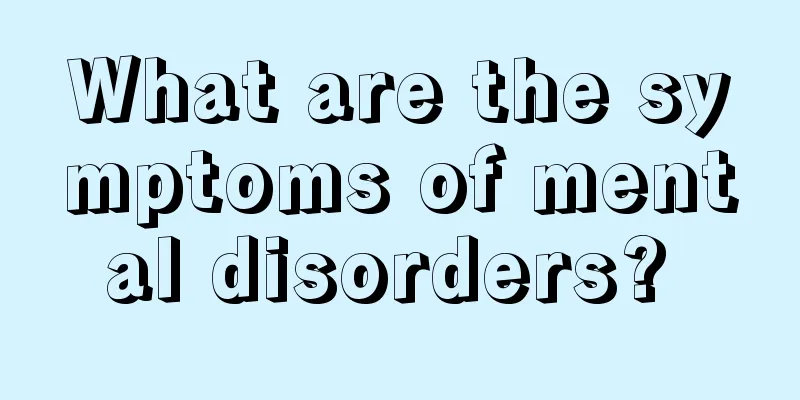What are the endocrine organs?

|
When it comes to endocrine, everyone will think of some terms, such as endocrine disorders, endocrine system and endocrine system diseases, etc. Endocrine system diseases are relatively complicated and can occur in multiple organs of the human body. Therefore, whenever endocrine disorders occur, we must seize the time to regulate them. Except for some professionals, I believe that most people do not know what the endocrine organs are, so let’s learn about them in detail below. What are the endocrine organs? The structural characteristics of endocrine glands are: glandular cells are arranged in cords, clusters or bubbles, have no ducts to discharge secretions, and are rich in capillaries. Hormones secreted by endocrine cells are divided into two major categories according to their chemical properties: nitrogen-containing hormones (including amino acid derivatives, amines, peptides and protein hormones) and steroid hormones. The ultrastructural characteristics of cells that secrete ammonia-containing hormones are that the cytoplasm contains rough endoplasmic reticulum and Golgi complex related to hormone synthesis, as well as membrane-bound secretory granules. The ultrastructural characteristics of cells that secrete steroid hormones are that the cytoplasm contains abundant smooth endoplasmic reticulum related to the synthesis of steroid hormones, but no secretory granules are formed; there are many mitochondria, and their cristae are mostly tubular; there are also many lipid droplets in the cytoplasm, and the cholesterol and other substances in them are the raw materials for synthesizing hormones. Each hormone acts on a certain organ or a certain type of cell within an organ, which is called the hormone's target organ or target cell. Target cells have receptors that bind to corresponding hormones, and the effects are produced after the receptors bind to the corresponding hormones. Nitrogen hormone receptors are located on the plasma membrane of target cells, while steroid hormone receptors are generally located in the cytoplasm of target cells. Many organs are not endocrine glands. But tissues or cells containing endocrine functions, such as the brain (endorphin, gastrin, releasing factors, etc.), liver (angiotensinogen, 25-hydroxyosteoblastic steroid, etc.), kidneys (renin, prostaglandins, 1,25-hydroxyosteoblastic steroid, etc.), etc. The same hormone can be synthesized in different tissues or organs, such as somatostatin (hypothalamus, pancreatic islets, gastrointestinal tract, etc.) and polypeptide growth factors (nervous system, endothelial cells, platelets, etc.). The nervous system and the endocrine system are closely related in physiology. For example, the middle part of the hypothalamus is the neuroendocrine tissue, which can synthesize antidiuretic hormone, oxytocin, etc., and store them in the posterior pituitary along the axons. Opium peptides act on both the nervous system (neurotransmitter properties) and the pituitary gland (hormone properties). The two influence and coordinate with each other in maintaining the stability of the body's internal environment. For example, the mechanism for maintaining blood sugar stability involves the effects of endocrine hormones such as insulin, glucagon, growth hormone, somatostatin, adrenal cortex hormones, etc., and the participation of the nervous system such as the sympathetic and parasympathetic nerves. Therefore, only when both the nervous system and the endocrine system are normal can the internal environment of the body be maintained in the optimal state. The main endocrine glands of the human body are: thyroid, parathyroid, adrenal glands, pituitary gland, pineal gland, pancreatic islets, thymus and gonads. |
<<: What does the right cerebellum control
>>: The difference between interventional chemotherapy and chemotherapy
Recommend
What are the examination methods for endometrial cancer? Need to do these examinations
The examination methods for endometrial cancer ar...
What should you eat for early stage lung cancer? Introduction to the importance of diet for early stage lung cancer
Lung cancer is a malignant lung disease that pose...
What are the diagnostic methods for laryngeal cancer
The incidence of laryngeal cancer accounts for ab...
How to preserve lychees for a long time
It is very difficult to preserve lychees, and peo...
What are the specific symptoms of colon cancer?
Colon cancer is a relatively common anorectal tum...
Benefits of hypoglycemic bitter melon
The problem of high blood sugar can easily cause ...
Contraindications after cardiac radiofrequency ablation
Anyone who knows a little about heart disease kno...
What causes heart murmurs? Be careful of congenital heart disease!
When many people have a heart examination, the do...
What are the symptoms of goiter? There are actually these complications
There are no obvious symptoms of goiter in the ea...
There are many small pimples on my neck. How should I deal with them?
There are genetic, mental, and lifestyle factors ...
Why does it hurt after teeth are ground down?
Many people have the habit of grinding their teet...
Dietary conditioning for patients with gallbladder cancer
Dietary conditioning plays an important role in t...
How powerful is the positive emotion
There are two kinds of emotions in life, positive...
What to do if there are vertical lines on eyebrows
As we age, especially girls, we will find that ou...
What should you eat if your blood viscosity is high? Have you eaten these?
Studies have found that the phenomenon of high bl...









